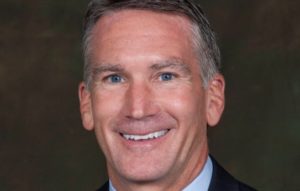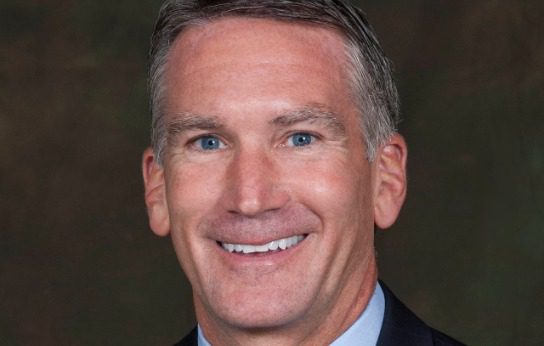
The day after pandemic restrictions drove employees from the office last spring, Ron Knutson, CFO of Chicago-based Lawson Products, grew concerned that short-term thinking could overwhelm strategic planning for the company.
So he began drafting a roadmap that would become the basis for company-wide decision-making by outlining goals for the company after the pandemic. These ranged from improving employee retention and customer loyalty to strengthening the company’s financial position.
“There were so many uncertainties in those first few weeks that it felt like it was very easy to get caught up in short-term decisions,” Knutson said about the MRO, or maintenance, repair and operations company that includes about 1,100 sales reps who provide an inventory service on behalf of their customers. Typically sales reps will ship products ranging from nuts and bolts to chemical and safety products directly to the customer’s location, visit in about a week to put the products away and then repeat the process.
Knutson credits balancing immediate- and long-term goals with helping Lawson literally stay on the same page as the operating team made plans for the future. He talked with StrategicCFO360 about how to conduct due diligence on an acquisition during the pandemic, his approach to preserving working capital and rethinking what is essential travel going forward.
How has your day-to-day work as CFO changed?
Even though we’re doing a lot of our work on a remote basis during the pandemic, effectively what we’re doing hasn’t changed dramatically. One of the changes that we’ve made is really just making sure that we stay connected on a very routine basis. Pre-pandemic our operations committee would get together every Monday afternoon for a couple of hours. We now have three touch points throughout the week to make sure that we’re connected into the operations of the organization.
I gather you’ve had a big emphasis on managing working capital and preserving liquidity. How do you build support for that within the company?
It always has been a focus of ours. In the early stages of the pandemic most organizations were probably a little concerned about how to manage their customer receivables from a working capital perspective. We effectively retained most of our credit policies. And at the same time, we proactively reached out to many of our customers to really get an understanding of what was happening within their business so that we could make the appropriate decisions as to whether or not we wanted to extend credit terms or stay on the same terms that we had.
And the other side of that equation is with our vendors. We proactively reached out to our suppliers and our vendors and were looking for extended terms that we could take advantage of. Most of our vendor relationships are long-term so we balanced that equation relative to making sure that if we were extending out our receivables a little bit, that we were also getting some offset to that with our vendor relationships. And that worked really, really well. In fact, our credit team has done a phenomenal job. Our past dues as a percent of our receivables have actually come down during the pandemic. And they worked really close with our sales team as well, to make sure that they’re not an inhibitor to a sale. As other organizations saw larger orders around some of the PPE type of inventory, we wanted to make sure that we could provide that support from a credit perspective.
You also made your largest acquisition, Partsmaster, during the pandemic. How do you evaluate that risk/reward equation at a time when it was very hard to anticipate how the pandemic would play out?
How do you do the due diligence? How do you get comfortable with an organization when you really don’t have the ability to sit across the table with the team of the organization? I would say that we’re looking at it from a risk standpoint. One of the areas that we knew right away with the acquisition that we made is that it’s a very close match to what Lawson does as a business in terms of the vendor-managed inventory. We knew that strategically it made a lot of sense. We spent quite a bit of time really trying to assess the effect the pandemic was having on their teams as well as on their sales results and so forth. What we saw, even though we were not physically there at their sites, was that that their sales organization was working very successfully. It’s a remote salesforce to begin with and even running into probably some challenges where some of their customers were not allowing individuals to be on site, their sales team was able to identify new products that were being introduced. A new sales approach in terms of reaching out, via email, via phone, via customer service, to make sure that we were still servicing our customers because a lot of the demand was still there. In fact many of our customers were deemed essential businesses. So from a risk perspective we were really focused on sales trends and ability to continue to service the customer. We knew strategically it fit really, really well. It was more about how is the performance during the pandemic and what did we envision for it coming out of the pandemic?
You mentioned some of the challenges in communicating with customers and employees, but what are some of the approaches that you think have worked well to preserve as much communication as possible?
Our overall philosophy around that was we felt like we could not over-communicate. We felt that it was critically important that we stay really well connected with our suppliers and for our suppliers to understand that we are a very financially strong organization. We don’t need them to worry about our ability to be able to pay for the product that comes in. Certainly our sales team stayed very, very close to our customers. If they were not able to be there physically on site, our sales teams were reaching out to our customers via email via our customer service group, or just via phone. We’re a relationship business, our customers place a lot of trust with our sales reps. And they rely on our sales reps to be there once a week in order to be able to fulfill the product needs that our customers have. And then internally within the organization there was a lot of communication that was happening not only via Teams and via the video calls and so forth, but our CEO, Mike DeCata, pretty much on a regular cadence, probably in the early stages almost every other week, would prepare a recording, or he would go live and communicate to the entire team that could either dial in or watch as a recording later.
So the philosophy of communication was a critical piece of our success. As we go back, there was a chart that we put together very early process. It was the day after we actually left the office and it really outlined, you know, what we looked like coming into pandemic and what we wanted to look like coming out of the pandemic. It covered everything from employee retention to strengthening our financial position to customer loyalty. And then we described the middle section of that is kind of the squeeze that we’re in. And so, we made sure that the decisions we were making were focused on the long-term view as to how we wanted to come out.
As an operating team, it really helped keep us focused because there was so much going on very early in the process in March and April. We really studied a path of coming out of the pandemic as strong or stronger as an organization than we entered it.
Looking ahead do you anticipate using this approach to continue balancing short-term decisions with keeping the long-term goals in mind?
Similar to other organizations, we have found ways to do business that we weren’t maybe sure that we could do previously. One example of that is some of the remote training that we’re providing to our sales reps. Historically our new newer sales reps would all travel into the Chicago area and spend some time at our distribution center. We’d get them trained on product and pricing and so forth. And now we’re handling 90 percent of that training on a remote basis, so that’s just one example of how we’ve adapted to this new environment whereby we still feel like we can be very, very productive in doing activities like that remotely. And probably in some regards be more productive by not having all that travel built into the process. It would be very easy to go back to the old ways, so I think it’s incumbent on us to make sure that we continue to leverage those areas that we were forced to make a change to. And if they’re working very well, there’s no reason that we cannot continue those activities going forward. That’s a big focus—to make sure that we just don’t go back to the old ways of doing business, that we take advantage of what we’ve learned throughout this process.








